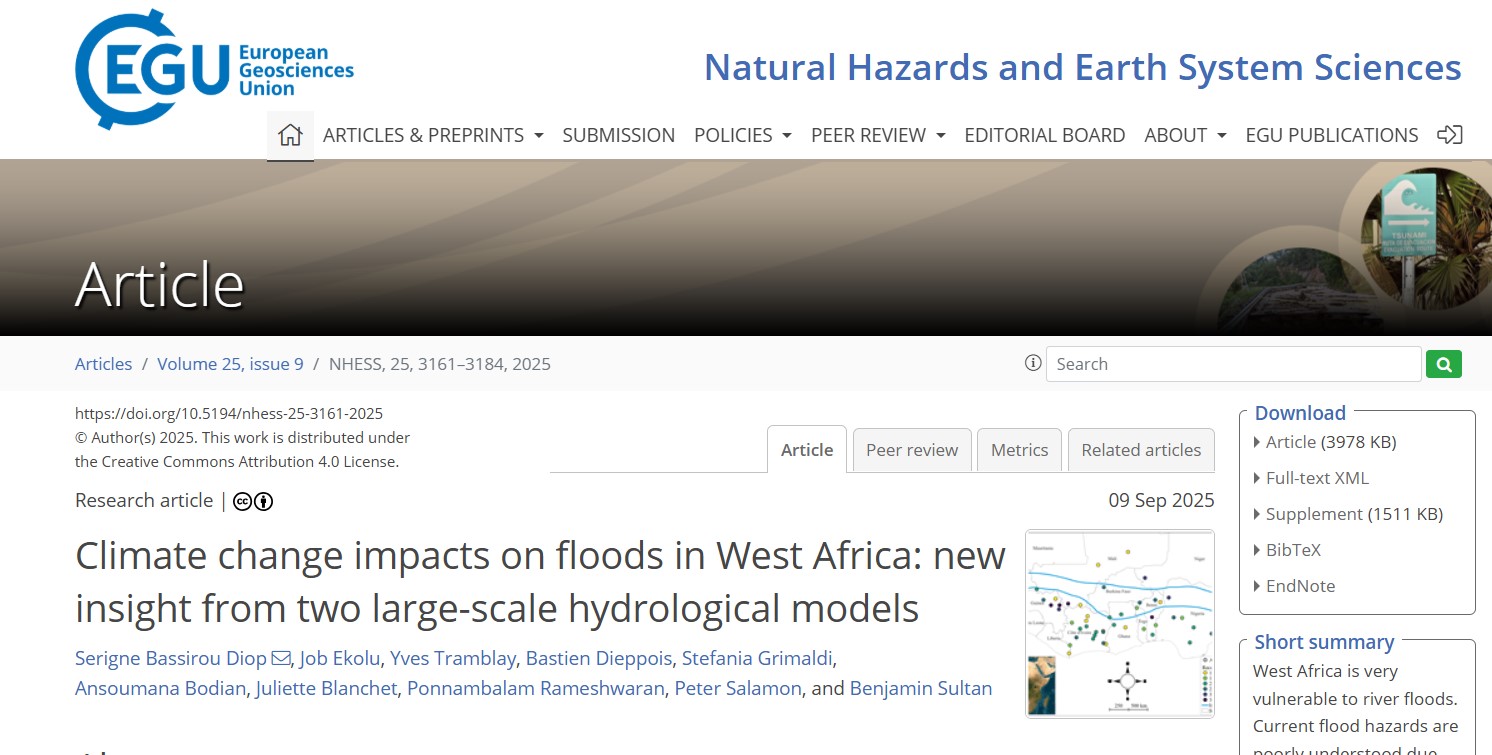ABSTRACT
West Africa is expected to face unprecedented shifts in temperature and extreme precipitation patterns as a result of climate change. The devastating impacts of river flooding are already being felt in most West African countries, emphasizing the urgent need for comprehensive insights into the frequency and magnitude of floods to guide the design of hydraulic infrastructure for effective flood risk mitigation and water resource management. Despite their significant socioeconomic and environmental impacts, flood hazards remain poorly documented in West Africa due to the data-related challenges. This study aims to fill this knowledge gap by providing a large-scale analysis of flood frequency and magnitudes across West Africa, focusing on how climate change may influence future flood trends. To achieve this, we have used two large-scale hydrological models driven by five bias-corrected sixth Coupled Model Intercomparison Project (CMIP6) climate models under two Shared Socioeconomic Pathways (SSPs). The generalized extreme value (GEV) distribution was utilized to analyze trends and detect change points by comparing multiple non-stationary GEV models across historical and future periods for a set of 58 catchments. Both hydrological models consistently projected increases in flood frequency and magnitude across West Africa despite their differences in hydrological process representations and calibration schemes. Flood magnitudes are projected to increase at 94 % (96 %) of stations for the 2-year (20-year) event in the near-term future and at 88 % (93 %) of stations for the 2-year (20-year) event in the long-term future, with some locations expected to experience increases exceeding 45 %. The findings from this study provide regional-scale insights into the evolving flood risks across West Africa and highlight the urgent need for climate-resilient strategies to safeguard populations and infrastructure against the increasing threat of flood hazards.
